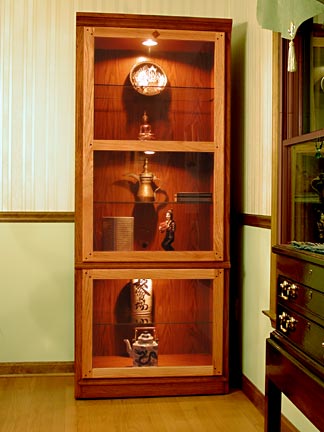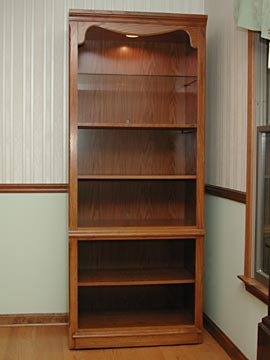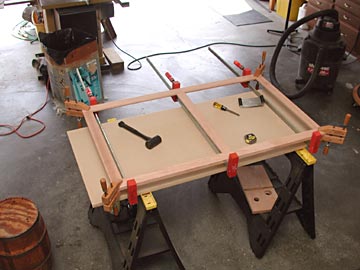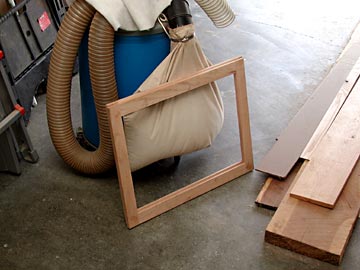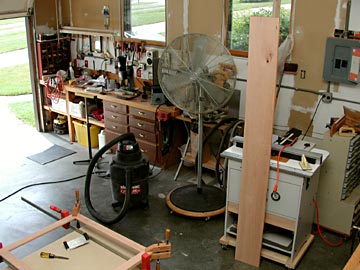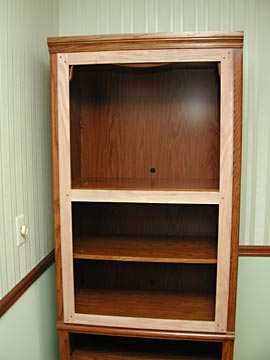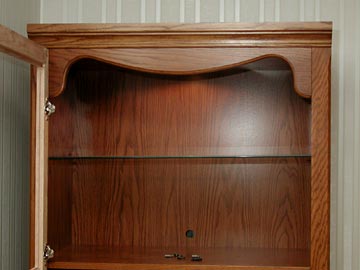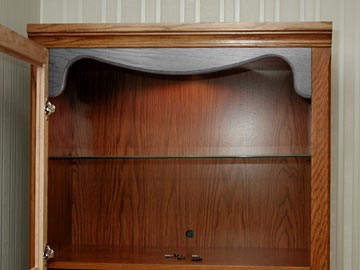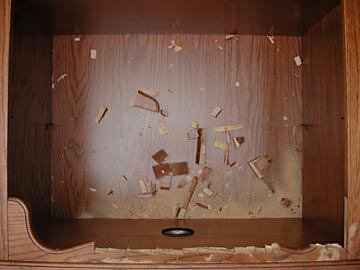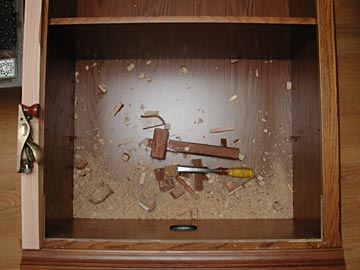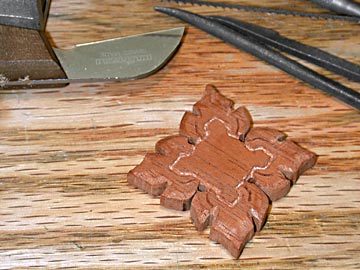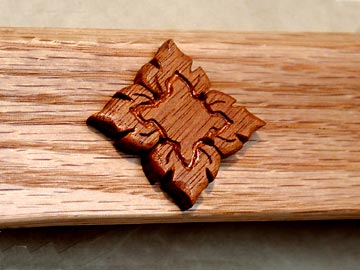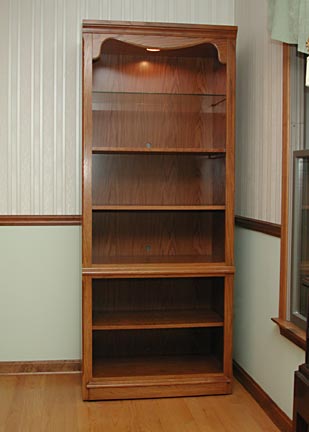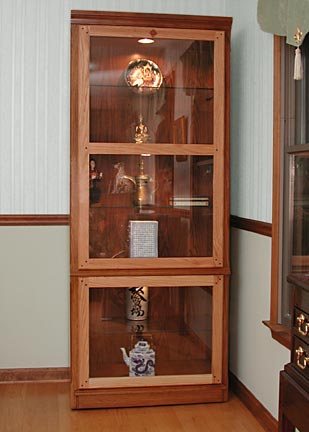|
|
|
|
|
|
Curio
Cabinet, 2001
|
|
|
|
|
|
|
|
|
|
|
|
|
|
|
|
|
|
|
|
|
|
|
|
|
|
|
|
|
|
|
|
|
|
|
|
|
|
|
|
|
|
|
|
Update July
23: The Project has been Completed!
|
|
|
|
|
|
|
|
|
|
|
|
|
|
|
|
|
This project
involved the conversion of twin bookshelves into curio cabinets. It required
the construction and installation of two doors, with glass, for each cabinet;
the replacing of wooden shelves with glass shelves; and the installation
of two additional cabinet light fixtures in each cabinet.
|
|
|
|
|
|
|
|
|
|
|
|
|
|
|
|
|
|
|
|
|
|
|
|
|
|
|
Left: One of the shelf
units (before). Above: One of the upper large doors clamped while glue dries.
|
|
|
|
|
|
|
|
|
|
|
|
|
|
|
|
|
|
|
|
|
|
Above left: two lower
doors glued up. Above right: the shop in its normal state of disarray. Left:
A bookshelf with one of the top doors temporarily installed.The door will
be removed for detail work, glass installation, and finishing.The apparent
curvature is an artifact of the wide-angle lens.
|
|
|
|
|
|
|
|
|
|
|
|
|
|
|
|
|
|
|
|
Above
and Left: The originals contain a design element (gray at left) that must
be removed, because it shows through the top of the new doors. This is a
daunting task, as there is no second chance. Below: With the cabinet lying
on its back on the floor, hacking away with a Japanese hand saw, a hammer
and sharp chisel, and a low-angle skew block plane... and patience. So far,
so good. |
|
|
|
|
|
|
|
|
|
|
|
|
|
|
|
|
|
|
|
|
|
|
|
|
|
I
have neglected to mention that we call this the “Asia Museum Project,”
because the two cabinets are going to house some of the many objets d’art
that we collected during years of travel in Asia. I wanted to add one small
Asian accent, and I chose a Lao design element called a Dok Kam Pu; a
stylized flower. This design comes from one of two books that I found in Laos
a few years ago entitled Sinlapa Lai Lao, (Lao Artistic Design), Volumes
1 and 2. I carved it from mahogany because it contrasts so nicely with the red
oak when fixed in place at the top center of the large door (above right, with
the first coat of finish in place.) |
|
|
|
|
|
|
|
|
|
|
|
|
|
|
|
|
|
|
|
|
|
|
|
|
|
|
|
|
July
14: At left, repeat of the “before” image from the top of the
page; at right one completed cabinet. The wood in the doors is red oak.
After many failures at matching the color of the original I gave up and
applied a natural finish to contrast with the rest of the cabinet. It works
well. For extra strength all mortises are pinned through with 1/4"
walnut pins that stand proud of the surface and have a pyramid shape. There
are three European cabinet hinges on each top door and two on each bottom
door. |
|
|
|
|
|
|
|
|
|
|
|
|
|
|
|
|
|
|
|
|
|
|
|
 |
 |
 |
 |
 |
 |
 |
 |
 |
 |
 |
 |
 |
 |
 |
 |
 |
 |
 |
 |
 |
 |
 |
 |
 |
 |
 |
 |
 |
 |
 |
 |
 |
 |
 |
 |
 |
